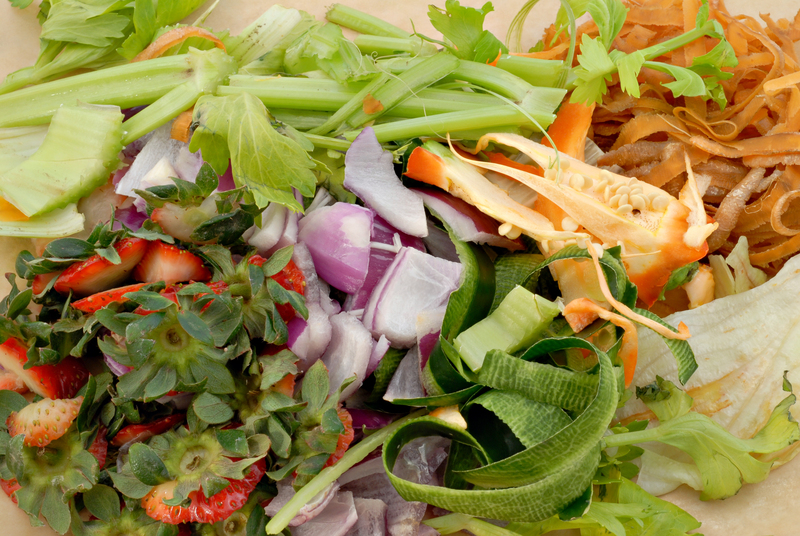A Comprehensive Guide to Disposing of Pots and Pans Sustainably
As eco-consciousness becomes increasingly essential in our everyday lives, understanding how to dispose of old pots and pans responsibly is more significant than ever. With millions of cookware pieces replaced every year, improper disposal can contribute to overflowing landfills and unnecessary environmental harm. This comprehensive guide delves into sustainable ways to get rid of unwanted cookware, ensuring that your cast iron, stainless steel, non-stick pans, and other kitchen essentials don't just go to waste.
Why Sustainable Disposal of Cookware Matters
Before exploring eco-friendly disposal solutions for pots and pans, it's crucial to understand why sustainable choices are vital:
- Reducing Landfill Waste: Most cookware is made from metals that take decades, if not centuries, to decompose. Dumping them in landfills can have long-term environmental impacts.
- Resource Conservation: Recycling or repurposing metal cookware conserves raw materials and reduces the energy needed for manufacturing new products.
- Prevention of Toxins: Some non-stick coatings may release hazardous chemicals if incinerated or left to break down in landfills.

Understanding the Materials of Your Pots and Pans
Different materials require varied preparation and disposal methods. Common cookware materials include:
- Cast Iron - Highly durable; ideal for reuse or recycling.
- Stainless Steel - Valuable for scrap; widely accepted at recycling centers.
- Copper - High recycling value.
- Aluminum - Lightweight and recyclable.
- Non-stick (Teflon or ceramic coated) - Requires special handling due to the coating.
- Enamel-coated - Can be trickier to recycle due to mixed materials.
Preparation for Disposing of Pots and Pans
Proper preparation streamlines the process and increases the chances of successful recycling or reuse:
- Remove non-metal parts: Take off plastic handles, knobs, or rubber grips, as these usually aren't recyclable with metals.
- Clean the cookware: Recyclers prefer items free of excessive residues, grease, or food.
- Check the manufacturer: Some companies offer take-back programs or warranties covering disposal.
Top Methods for Sustainable Pots and Pans Disposal
1. Recycling Old Pots and Pans
Metal recycling is one of the most eco-friendly ways to dispose of cookware. Most metal pans--regardless of whether they are stainless steel, aluminum, copper, or cast iron--can be recycled if the non-metal parts are removed.
- Curbside programs: Some cities accept small metal items through curbside recycling, but many require you to take cookware directly to a scrap metal facility or recycling center.
- Scrap yards: These locations often accept various metals and may even pay you for high-value materials like copper.
- Hazardous coatings: If your pan has a non-stick coating (like Teflon), check with the recycler before dropping it off. Some facilities cannot process coated cookware due to the chemicals involved.
2. Donating Usable Cookware
Have pots and pans that are still functional? Consider donating your old cookware. Donating extends the life of your kitchen items and helps people in need.
- Charity shops: Organizations like Goodwill, Salvation Army, or local shelters willingly accept gently used, clean cookware.
- Community centers: Soup kitchens, food banks, and community kitchens often welcome cookware donations.
- Online marketplaces: Give your pots and pans a second life by listing them for free on platforms (Freecycle, Craigslist, Facebook Marketplace).
3. Repurposing and Upcycling
Repurposing transforms your old pans and pots into innovative household items. These creative solutions keep cookware out of landfills and breathe new life into old pots:
- Planters: Poke drainage holes in the bottom, fill with soil, and grow herbs or flowers.
- Organization: Use deep pots to store tools, art supplies, or gardening gear.
- Decor: Turn non-stick pans into wall clocks or use lids as serving trays.
Upcycling taps your creativity and is sustainable--your unwanted pans become useful once again!
4. Company Take-Back Initiatives
Some manufacturers have recognized the need for responsible cookware disposal and offer take-back or recycling programs.
- Check the brand: Brands like Calphalon, GreenPan, and Farberware occasionally run recycling or trade-in programs for their products.
- Contact customer service: Even if there's no publicized program, reach out and ask if they can help dispose of their cookware sustainably.
5. Scrap Metal Drives and Community Recycling Days
Municipalities or local recycling organizations often hold scrap metal drives and recycling events. These offer a chance to responsibly recycle cookware that might otherwise be difficult to dispose of via curbside services.
- Community events: Keep an eye on local bulletin boards and city websites for upcoming recycling opportunities.
Disposal Tips by Cookware Type
Disposing of Non-Stick Pots and Pans Sustainably
Non-stick pans pose unique challenges due to the chemical coatings, typically Teflon (PTFE) or ceramic. Here's how to handle them responsibly:
- Contact your recycling center: Ensure they can process non-stick cookware.
- Remove the coating: In rare cases, some recyclers permit metal pans if the coating is sandblasted off, though this is not commonly available.
- Explore mail-in services: Programs like TerraCycle may offer mail-in recycling for hard-to-recycle materials such as Teflon-coated items (verify specific guidelines and costs).
Never burn or incinerate non-stick coated pans--toxic fumes can be released.
How to Dispose of Cast Iron Pans Sustainably
- Donate: Even rusty cast iron pans can often be restored. Many thrift shops or community centers accept them.
- Recycle: Cast iron is in demand at metal reclamation companies and scrap yards. Ensure it is clean and free of non-metal materials.
- Repurpose: Old cast iron skillets can be upcycled into doorstops, heat diffusers, or unique garden planters.
Proper Aluminum and Stainless Steel Cookware Disposal
- Separate parts: Remove plastic or silicone handles.
- Clean thoroughly: This makes these metals prime candidates for recycling.
- Scrap metal dealer: The high value of these metals makes them attractive to scrap buyers.
Safe Disposal of Copper and Enamel-Coated Pots
- Copper: Bring to metal recycling centers. Some artisan workshops also accept copper for reuse in crafting.
- Enamel-coated: Many municipal programs refuse these due to mixed materials. Remove as much enamel as possible before disposing as scrap, or donate if the item is in usable condition.
What Not to Do When Getting Rid of Pots and Pans
- Don't trash usable cookware: Someone else might need it; always try to donate or repurpose first.
- Don't attempt to recycle through regular blue bins (unless confirmed): Most residential recycling services aren't equipped for mixed-material or bulky metals.
- Don't put non-stick pans in a burn pile or incinerator: The coatings can emit hazardous chemicals.
Frequently Asked Questions
Can I place my old pans and pots in the regular recycling bin?
Usually, no. Most municipal recycling programs do not accept cookware due to their size, shape, and material mix. Always check with your local program or bring items straight to a scrap metal recycling center.
How do I know if my old cookware can be donated?
If your cookware is still functional (not warped, cracked, or missing essential parts) and can be properly cleaned, most donation centers will accept it. Call ahead to confirm their donation policies.
What to do if my pot or pan has a wooden or plastic handle?
Where possible, unscrew and separate non-metal parts from the pans before recycling. Some recyclers may accept mixed-material items, but others require pure metal.
Can non-stick or Teflon pans be recycled?
It depends. Some facilities will accept them after the coating is professionally removed. If not accepted locally, look into specialized recycling companies or mail-in programs like TerraCycle.
Innovative Sustainable Cookware Brands
To prevent the problem in the future, seek out sustainable, eco-minded cookware brands when you next buy pots and pans. Look for:
- Recycled content: Brands using recycled metals in their products.
- Longevity: Heavy-duty construction and lifetime warranties.
- Take-back or recycling programs: Manufacturers committed to closing the loop.
Popular eco-friendly cookware companies include GreenPan, Scanpan, Made In, and Lodge.

Final Thoughts: A Greener Kitchen Awaits
Learning to dispose of old pots and pans sustainably is a small change that makes a big difference for the planet. Whether you're a seasoned chef upgrading your kitchen, or simply clearing space, these environmentally friendly disposal options ensure your cookware doesn't end up as another burden on our landfills. Donate, recycle, repurpose, and choose wisely for a greener tomorrow!
Summary Checklist for Sustainable Cookware Disposal
- Donate usable cookware to charities or community kitchens.
- Recycle metal pans at scrap yards or metal recycling centers (following local guidelines).
- Upcycle for creative home projects.
- Contact manufacturers for take-back or recycling programs.
- Consider sustainability the next time you shop for cookware.
Make sustainable cookware disposal a household habit and inspire others to do the same!
